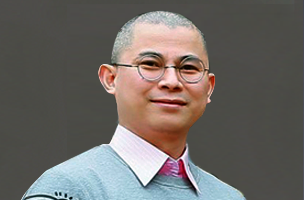Technology Transfer in VIETNAM
Bud & Prairie is fully able to advise and assist our clients with technology transfer related matters.
As you may be aware, technology transfer involves the process of sharing or transferring technology, knowledge, skills, and innovations from one organization or entity to another. This is often done to enable commercialization, improve existing products, or solve specific problems. Here’s an overview of how technology transfer works, its importance, and key steps involved:
- Understanding Technology Transfer
- Definition: Technology transfer refers to the process of moving scientific findings or innovations from research institutions (such as universities, government labs, or private R&D departments) to practical applications in industries, businesses, or other organizations.
- Forms of Transfer: This can involve licensing agreements, joint ventures, partnerships, or the establishment of spin-off companies. It can also include the exchange of technical expertise, know-how, or training.
- Importance of Technology Transfer
- Economic Growth: Technology transfer helps drive economic development by commercializing innovations, creating new industries, and enhancing competitiveness.
- Innovation Diffusion: It accelerates the spread of new technologies and innovations across industries, regions, and countries.
- Capacity Building: It strengthens the technical capabilities of receiving organizations, enabling them to adopt and improve upon transferred technologies.
- Public Benefit: Technology transfer can bring public benefits by turning scientific discoveries into products or services that improve quality of life, such as in healthcare, environmental protection, and energy.
- Key Steps in Technology Transfer
- 1. Identifying and Evaluating Technology
- Invention Disclosure: Researchers or inventors disclose their innovations to a technology transfer office (TTO) or relevant entity, detailing the technology and potential applications.
- Assessment: The technology is evaluated for its market potential, patentability, and readiness for commercialization.
- 2. Protecting Intellectual Property (IP)
- Patenting: If the technology is patentable, a patent application is filed to secure intellectual property rights, protecting the innovation from unauthorized use.
- IP Management: Trademarks, copyrights, or trade secrets may also be applied, depending on the nature of the technology.
- 3. Marketing and Finding Partners
- Market Research: Identifying potential markets, industries, and partners who could benefit from the technology.
- Outreach: Promoting the technology to potential licensees, investors, or partners through marketing materials, industry events, and direct outreach.
- 4. Negotiating Agreements
- Licensing Agreements: Negotiating terms for licensing the technology to third parties, including royalties, exclusivity, and scope of use.
- Joint Ventures: Establishing joint ventures or partnerships with companies that can further develop and commercialize the technology.
- Spin-offs: Creating spin-off companies to commercialize the technology, often with the involvement of the original researchers or inventors.
- 5. Commercialization and Implementation
- Development: The receiving entity or partner further develops the technology into a marketable product or service.
- Scaling Up: Manufacturing, marketing, and distribution processes are established to bring the product to market.
- Monitoring and Support: Ongoing support may be provided to ensure successful commercialization, including technical assistance or additional research.
- 6. Revenue Generation and Impact
- Royalty Income: The original institution or inventors receive royalties or other financial returns from the commercialization of the technology.
- Societal Impact: The technology is deployed in the market, potentially leading to improved products, services, or solutions that benefit society.
- Challenges in Technology Transfer
- Market Readiness: Not all innovations are immediately ready for market, requiring further development or adaptation.
- IP Management: Protecting intellectual property across different jurisdictions can be complex and costly.
- Cultural Differences: Differences in organizational cultures between research institutions and commercial entities can hinder collaboration.
- Resource Constraints: Limited funding or resources may affect the ability to fully develop and commercialize technology.
- Facilitating Successful Technology Transfer
- Strong TTOs: Establishing well-resourced Technology Transfer Offices (TTOs) within research institutions to manage IP, evaluate innovations, and facilitate partnerships.
- Industry Partnerships: Building strong relationships between academia and industry to foster collaboration and identify market needs.
- Government Support: Policies and incentives that encourage technology transfer, such as tax breaks, grants, or public-private partnerships, can enhance the process.
- Capacity Building: Training researchers and entrepreneurs in commercialization, IP management, and business development to bridge the gap between innovation and market application.
- Examples of Technology Transfer
- University Spin-offs: Universities often create spin-off companies to commercialize academic research, particularly in sectors like biotechnology, information technology, and renewable energy.
- Public-Private Partnerships: Government agencies partnering with private companies to commercialize technologies developed in public research labs, such as in defense or space exploration.
- International Technology Transfer: Transfer of technology between countries, often seen in global collaborations or foreign direct investment, where advanced technologies are shared with developing nations to build capacity and stimulate economic growth.
- Global Considerations
- International Regulations: Navigating different IP laws, trade agreements, and regulatory environments when transferring technology across borders.
- Sustainable Development: Aligning technology transfer efforts with global sustainability goals, such as the United Nations Sustainable Development Goals (SDGs), to ensure equitable and environmentally friendly outcomes.
By effectively managing these aspects of technology transfer, organizations can ensure that innovations reach their full potential, benefiting both the innovators and society as a whole.
For further information, please do not hesitate to contact us at bud-prairie@bud-prairie.com.
1. Patentability Search
Patentability search is also known as a novelty search, which helps identify whether or not an idea is novel and involves an inventive step (nonobvious). The most complete searches include all types of prior art to give an inventor or organization a comprehensive look at the technology landscape. A patentability search should be completed during the ideation phase, as well as prior to disclosure.
A patentability search is conducted by examining published patents that relate to your own invention to figure out whether your idea has already been patented. You can also see similar inventions, allowing you to improve and refine your own invention without infringing on someone else’s patent. And you can do all this before you have spent many hours and thousands of dollars on an idea that you can’t patent.
2. Freedom to Operate Search
A freedom to operate search (often abbreviated as FTO) determines how similar your product is to existing patents, and therefore how likely you are to infringe on a patent by making and marketing your invention. You may also see this type of search called a patent infringement search or right-to-use search.
Completing an FTO search early in the innovation cycle helps R&D teams design around existing patents. Later on, the results of the search can identify whether you may need to license other patents to bring your product to market.
3. State of the Art Search
Completing a state of the art search (also known as a product clearance or patent landscape search) allows you to examine the literature related to a specific industry, rather than around a certain technology, which may be applicable across industries. Using a state of the art search helps businesses find competitors and existing products within their field. These insights allow researchers, engineers, and leaders to make strategic decisions at any point within the innovation cycle.
4. Invalidity Search
To assess the strength of a specific patent, companies will use an invalidity search. This is also called a validity search. The results of this search determine whether or not the patent holder can claim infringement. They can also be used to decide licensing fees or value. If an invalidity search finds evidence in the form of existing, yet undiscovered, prior art, the patent should not have been granted and is unenforceable. This type of patent search is completed after a patent is granted.
5. Evidence of Use Search
Some organizations actively seek out products that infringe on their patent rights. This type of search is called an evidence of use search. To find these products, an organization or inventor will review similar patents and look for evidence the patent is utilized in a way that infringes on the searcher’s rights. Evidence of use searches happen after a patent is granted and as it matures.
6. Search Database
There are several databases in which patent searching may be done. Many databases such as USPTO, Google Patents, Free Patents Online, esp@cenet etc. are freely available, while other databases such as ThomsonInnovation, Orbit, Patbase etc. are available on the basis of a subscription. Each of these databases varies in terms of at least one of the following: Data Coverage, Search Engine, Interface.
• Google Patent Search Database. The Google search engine has revolutionized how people use the Internet. …;
• Patentscope. Patentscope is a free database put out by the World Intellectual Property Organization (WIPO)…;
• The USPTO Database…;
• Espace European Database…
The following are some of the largest and most popular patent office databases.
• Canadian Patents Database (CIPO)…;
• DEPATISnet (DPMA)…;
• Espacenet (EPO)…;
• JP-PlatPat (JPO)…;
• PatentScope (WIPO)…;
• U.S. Patent Assignment Database (USPTO)…;
• U.S. Patent Center (USPTO)…;
• U.S. Patent Databases (USPTO).
However, an inventor or applicant can also conduct their own patent search. The inventor or applicant has the advantage of often being more familiar with the art to which the invention relates, including having an understanding of the common knowledge held by persons skilled in the art and the relevant terminology.
Patent drafting is a part of how to patent an idea and is the process of writing the patent description and claims. It is at the core of every patent application. When the patent is issued or allowed, the draft serves as the specification part of the document. The patent applicants have to be more aware that depending on how well the complete specification is drafted and how precisely and correctly the claims describe the invention or the imaginary ‘boundary” is set, the easier it will be to defend it against third parties.
Normally, a patent specification covers the following parts:
• Field of Invention: It generally discloses a field to which the invention generally relates.
• Background: It discloses existing devices or methods related to the field of invention, broadly known as prior art. Background generally discloses prior art and limitations or disadvantages associated with the prior art.
• Summary of Invention: It (i) discloses the objectives of the invention, (ii) generally lists distinguishing features and advantages of the invention for which protection is being sought, (iii) summarizes the main features of the invention to be claimed, and (iv) also includes a broader explanation of the invention and briefly mentions the solution provided by the invention.
• Brief Description of Drawings (if any): If the invention includes any drawings, then this section includes a description of the drawing briefly such that a reader can get an overview of what could be disclosed by the drawing. The drawings are to be prepared in separate sheets as per different guidelines of different jurisdictions. The drawing sheets are filed with the patent specification.
• Detailed Description of Invention: It explains the different features of the invention in detail. Detailed description should be written such that a skilled person in the art can understand the invention solely after referring to this description. All claimed features and their interconnections, if any, need to be explained. In other words, all the claimed features need to be well supported in the detailed description.
• Claim(s): Claims are the most important part of a patent draft. Claims decide the scope of the protection which would be awarded to the inventor when the patent is granted. Claims are broadly divided into two categories, independent claim, and dependent claim. Every patent draft or patent application must contain at least one independent claim. Claims tend to change in course of the examination (narrower in most cases than the originally filed claims.
• Abstract: It is a technical summary of the invention. Generally, the Abstract should disclose the invention sufficiently to enable a person to perform a search for anticipation. The publication of a patent application includes publication of the abstract and representative drawing, if any.
• Drawings: Not all specifications have drawings. Such drawings, if any, would be prepared and submitted to the Patent Office in separate sheets. Different jurisdictions have different rules for allowable drawing sheets.
The significance of patent drafting and its impact on the patent protection should be conveyed to the SMEs, start-ups and inventors along with the information on importance of the patent protection in general. They should be informed that in case of any opposition or challenging the validity of their patent by a third party, a poorly drafted patent will be easily invalidated.
A patent is a right granted to an individual or enterprise by the government which excludes others from making, using, selling, or importing the patented product or process without prior approval. Patent filing or patent registration is the first step an inventor takes to protect his/her invention from being misused.
Under Vietnam legislation, there exists three kinds of patents, i.e. Invention Patent, Utility Solution Patent and Design Patent. Patents may be granted to anyone who invents or discovers any new and useful process, machine, article of manufacture, or compositions of matters, or any new useful improvement thereof. Patent filing is essential for establishing definitive, enforceable IP rights for your inventions, covering all relevant jurisdictions. A patent registers your invention and lets you take legal action against anyone who makes, uses, sells or imports your invention without your permission.
You should be aware of the examination process conducted by the Intellectual Property Office of Vietnam (IP Vietnam). This process begins with the filing of a patent application with IP Vietnam and completed by granting a patent (if the invention meets the protection criteria) or rejection/refusal (if the invention does not the protection criteria).
We can help you with such a patent prosecution by drafting a patent specification or translating such specification into local language, filing, and negotiating with IP Vietnam’s examiners regarding the patentability of the invention in order to obtain patent protection and rights for an invention.
An opposition proceeding is an administrative process available under the patent law of many jurisdictions which allows third parties to formally challenge the validity of a pending patent application (pre-grant opposition), of a granted patent (post-grant opposition).
Once the patent application is published, an opposition may be filed within a certain time period prescribed under the applicable law. The opponent shall state the grounds for opposition and submit any evidence. If no opposition is filed during that period, the substantive examination will be carried out.
In the meantime, an applicant for a patent, any of whose claims has been twice rejected, may appeal from the decision of examiners to IP Vietnam, having once paid the fee for such appeal.
LET'S GET STARTED
Please fill in and submit the form for our assistance.




